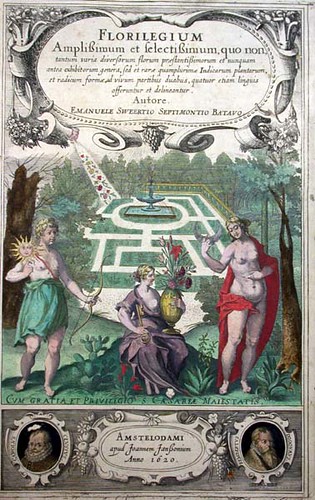Emanuel Sweerts: Florilegium
Amsterdam: 1614-1620
Sp Coll Hunterian X.1.12
The introduction of engraving as a technique for book illustration coincided with the proliferation of new plant arrivals in Europe from Turkey and the New World. A spate of ‘florilegia’ ensued; usually depicting the plants in an individual’s garden, there was also much copying of other artists’ work. That commissioned by Rudolf II of Austria of Emanuel Sweerts (1552-1612), a Dutch merchant and natural history dealer, was among the earliest. It was completed in 1609 and originally published in 1612; the copy here is one of many reissues. Engraving permitted more accurate detail than woodcut, with hatching, stippling and white gaps to give a three-dimensional effect and simulate reflexion from shiny leaves. Sweerts and Johann Theodor de Bry were the first to establish the convention of portraying lower stem with bulb or root alongside severed upper stem and flower in order to reproduce the plant life-size on the page.
This copy is an interesting example of a book that has been incompletely coloured by its original owner.
Previous page ; next page





